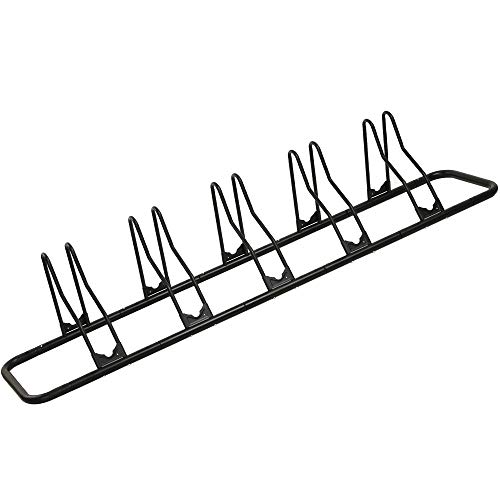How to Choose the Indoor Bike Storage
Hi my readers! It’s Samantha Kim from best2buy.reviews. Today, I'm excited to share some tips for choosing Indoor Bike Storage. It will help you easily to decide! Let’s check it now!
- 1. What are Indoor Bike Storage?
- 2. Types of Indoor Bike Storage
- 3. Characteristics of Indoor Bike Storage
- 3.1. Space Efficiency:
- 3.2. Capacity:
- 3.3. Installation and Portability:
- 3.4. Security:
- 3.5. Material and Construction:
- 3.6. Aesthetic Considerations:
- 3.7. Accessibility:
- 3.8. Protection from Damage:
- 4. Materials of Indoor Bike Storage
- 4.1. Metal:
- 4.2. Wood:
- 4.3. Plastic:
- 4.4. Rubber or Foam:
- 4.5. Composite Materials:
- 4.6. Hybrid Materials:
- 4.7. Textile or Fabric:
- 5. How to choose Indoor Bike Storage?
- 5.1. Available Space:
- 5.2. Bike Capacity:
- 5.3. Installation and Assembly:
- 5.4. Security:
- 5.5. Material and Durability:
- 5.6. Aesthetics:
- 5.7. Accessibility:
- 5.8. Protection:
- 5.9. Budget:
- 5.10. Reviews and Recommendations:
- 6. In conclusion
What are Indoor Bike Storage?
Indoor bike storage refers to the various methods and solutions used to store bicycles inside a building, typically within a home, apartment, garage, or other indoor spaces. Proper indoor bike storage helps keep bicycles organized, protects them from damage, and prevents clutter.

Types of Indoor Bike Storage
There are several types of indoor bike storage options, including:
Wall-mounted bike racks:
- These racks are attached to the wall and hold the bike horizontally, keeping it off the floor and out of the way. Wall-mounted racks are great for saving floor space.
Ceiling-mounted bike hoists:
- Ceiling hoists use a pulley system to lift the bike and suspend it from the ceiling. This is a space-saving solution, especially in garages or rooms with high ceilings.
Freestanding bike racks:
- These are standalone racks that can be placed anywhere in a room. They often accommodate multiple bikes and may have a vertical or horizontal design.
Bike storage hooks:
- Simple hooks can be screwed into the wall or ceiling, allowing you to hang the bike by its frame or wheel. This is a cost-effective and space-efficient solution.
Bike stands or floor racks:
- These are portable racks that support the bike upright. They are often used in living spaces or offices where wall or ceiling mounting is not possible.
Furniture with integrated bike storage:
- Some furniture pieces, such as shelves or cabinets, come with built-in bike storage compartments. These provide a dual function of storage and home decor.
Bike storage sheds or cabinets:
- Larger indoor spaces, such as garages or dedicated storage rooms, may have sheds or cabinets designed specifically for bike storage. These can offer more protection and security.
Characteristics of Indoor Bike Storage
Some common characteristics associated with different indoor bike storage options:
Space Efficiency:
- Wall-mounted racks and hooks: These solutions maximize floor space by holding the bike vertically or horizontally against the wall.
- Ceiling-mounted hoists: Lift the bike overhead, making efficient use of vertical space.
Capacity:
- Freestanding racks and stands: Can accommodate multiple bikes, making them suitable for households with multiple cyclists.
- Single bike storage: Some solutions are designed for individual bikes, suitable for smaller living spaces.
Installation and Portability:
- Wall-mounted racks, hooks, and ceiling hoists: Generally require installation, but some may be more portable than others.
- Freestanding racks and stands: Easy to move and relocate as needed.
Security:
- Locking options: Some storage solutions come with integrated locks or allow you to attach a separate lock to secure the bike.
- Enclosed cabinets or sheds: Provide additional security by keeping the bike out of sight and locked away.
Material and Construction:
- Metal racks and hooks: Durable and sturdy, often capable of supporting heavy bikes.
- Wood or plastic racks: Lighter and may be more suitable for lighter bikes or casual use.
Aesthetic Considerations:
- Design and style: Some storage solutions are designed to be aesthetically pleasing and may even serve as decorative elements in a room.
- Integration with furniture: Furniture pieces with integrated bike storage often blend seamlessly with the overall decor.
Accessibility:
- Ease of use: Consider how easy it is to load and unload the bike from the storage solution.
- Quick access: Some solutions are designed for quick retrieval, making them suitable for daily use.
Protection from Damage:
- Padding or cushioning: Some storage solutions have features to protect the bike frame from scratches or dings.
- Weather protection: For outdoor storage or in garages, consider solutions that provide protection against dust, moisture, and other environmental factors.
Materials of Indoor Bike Storage
Common materials used for indoor bike storage:
Metal:
- Steel: Sturdy and durable, steel is commonly used for heavy-duty bike racks and stands. It provides excellent support and stability.
- Aluminum: Lightweight and corrosion-resistant, aluminum is a good choice for portable or wall-mounted racks. It's often used in high-end designs.
Wood:
- Hardwood: Wooden bike racks can add a touch of warmth and elegance to indoor spaces. Hardwoods like oak or walnut are durable and can support the weight of bikes.
- Plywood: Lighter than hardwood but still sturdy, plywood is often used for DIY or budget-friendly bike rack projects.
Plastic:
- Polypropylene: Lightweight and resistant to moisture, polypropylene is commonly used in budget-friendly freestanding bike racks and hooks. It may not be as durable as metal or wood.
- ABS (Acrylonitrile Butadiene Styrene): A tough and impact-resistant plastic, ABS is used in some bike rack components for added strength.
Rubber or Foam:
- Padding: Many bike storage solutions, especially wall-mounted hooks or racks, incorporate rubber or foam padding to protect the bike frame from scratches or damage.
Composite Materials:
- Fiber-reinforced plastics: These materials combine the strength of fibers (such as fiberglass) with plastic resins to create lightweight and durable storage options.
Hybrid Materials:
- Combination of metal and wood: Some designs incorporate both metal and wood elements, providing a balance between strength and aesthetics.
Textile or Fabric:
- Soft bike covers or bags: While not the primary structure, fabric can be used to cover bikes for protection against dust or to prevent contact with walls.
How to choose Indoor Bike Storage?
Some key considerations to help you make an informed decision:
Available Space:
- Wall Space: If you have limited floor space, consider wall-mounted racks or hooks to take advantage of vertical space.
- Floor Space: Freestanding racks or stands are suitable for larger rooms or areas with open floor space.
- Ceiling Height: For high ceilings, ceiling-mounted hoists can be an efficient space-saving option.
Bike Capacity:
- Single or Multiple Bikes: Choose a storage solution that accommodates the number of bikes you own.
- Expandability: If you plan to add more bikes in the future, select a solution that can be easily expanded.
Installation and Assembly:
- DIY vs. Pre-Assembled: Consider whether you prefer a ready-to-use solution or if you're comfortable with DIY installation.
- Ease of Installation: Some storage options may require tools and drilling, while others are simpler to install.
Security:
- Locking Options: If security is a concern, look for storage solutions that come with built-in locks or provide the option to attach a separate bike lock.
Material and Durability:
- Metal: Offers durability and strength. Consider the weight capacity and the material's resistance to corrosion.
- Wood: Provides a more aesthetic appeal. Ensure the wood is sturdy and capable of supporting the weight of your bikes.
- Plastic: Lightweight and affordable, but may not be as durable as metal or wood.
Aesthetics:
- Design and Style: Choose a storage solution that complements the overall design of your living space.
- Integration with Furniture: If you prefer a more discreet option, consider furniture pieces with integrated bike storage.
Accessibility:
- Ease of Use: Ensure that the chosen storage method allows for easy loading and unloading of bikes.
- Quick Access: If you use your bike frequently, choose a storage solution that provides quick and convenient access.
Protection:
- Padding or Cushioning: If you're concerned about protecting your bike's frame, look for storage options with built-in padding or consider adding protective materials.
- Weather Protection: For outdoor storage or in garages, choose a solution that provides protection against dust, moisture, and other environmental elements.
Budget:
- Affordability: Consider your budget and explore options that align with your financial constraints.
Reviews and Recommendations:
- Customer Reviews: Read reviews from other users to get insights into the performance, durability, and ease of use of the storage solution.
- Recommendations: Seek recommendations from friends, family, or cycling communities for reliable storage options.
By carefully considering these factors, you can choose an indoor bike storage solution that not only meets your practical needs but also complements your living space and personal preferences.
In conclusion
To buy Indoor Bike Storage, you can buy by going to store or shopping online. Now, It’s very convenient to buy anything with a smart phone. Only need accessing Website Amazon, you can easily find your needs. To help you, we also have list of products which highly appreciated by users and experts. You can refer. and click : Buy it on Amazon. I believe that you will be satisfied with your selection.
I’m very happy to response your question. If you need our support, don’t hesitate, kindly comment below. I’m always available to response you. Should read carefully before paying anything.










